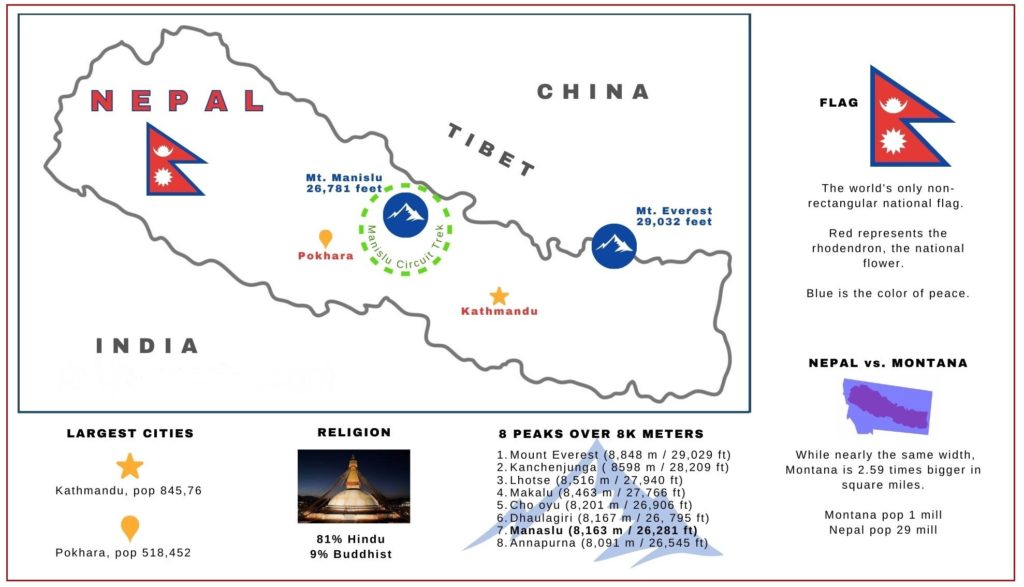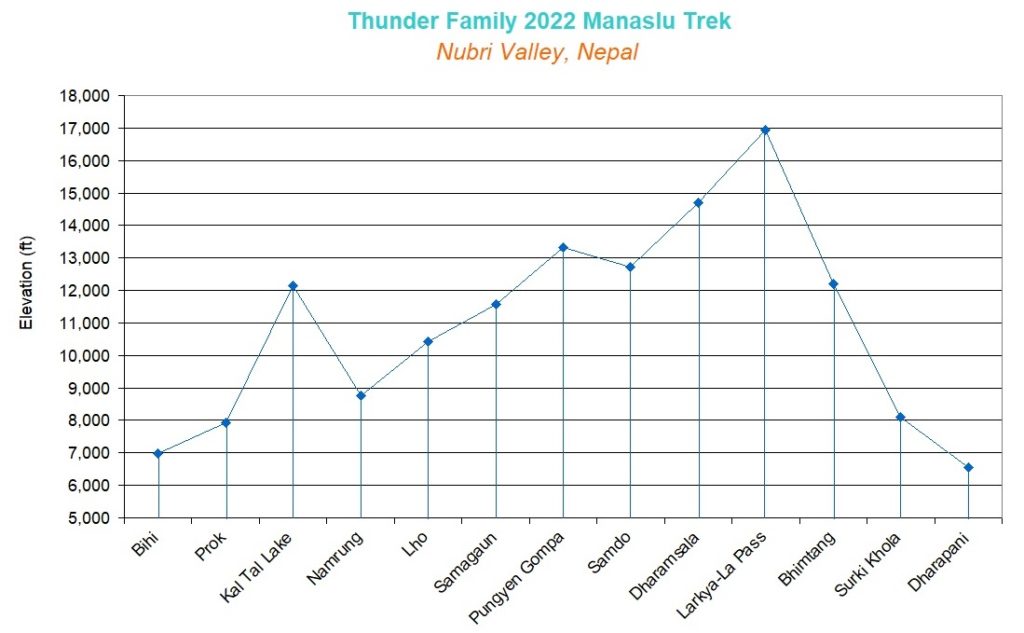Our family of six chose to adventure to Nepal for a ‘challenge’ vacation.
Our third daughter has been living in Kathmandu for a few years while working on her master’s degree. So the other five members of our family flew half-way around the globe to visit her and experience the life she’s been living in her Bouddha neighborhood. Part of the trip was a planned two week trek in the Himalayas, which was a bucket-list trip for us.

For our trek, we chose to hike the Manaslu Circuit in the Nubri Valley. This is the region where our nephew Tenzing was born before he was adopted by our sister and brother-in-law. Tenzing grew up in Jackson Hole, Wyoming, but his parents took him back to Nepal often, keeping him connected to his Nepali birth family.
The Nubri Valley is one of the less travelled Himalayan regions that still offers a glimpse into life before modern amenities. Being in the villages was like teleporting back to medieval times. In 13 days we never saw a single engine or wheeled cart, we had limited electricity and wi-fi, no indoor plumbing, and our rooms were never heated.
Our trek culminated in a snow-covered mountain pass called Larkya-La, which is almost 17,000 feet high above sea level. The pass is the closest point on the trek to Mt. Manaslu, the eighth-highest mountain in the world, and very close to the border with Tibet. Our guide, Lhakpa Lama (Tenzing’s cousin), has taken several trading trips to Tibet and expressed frustration that the border is still closed due to COVID.
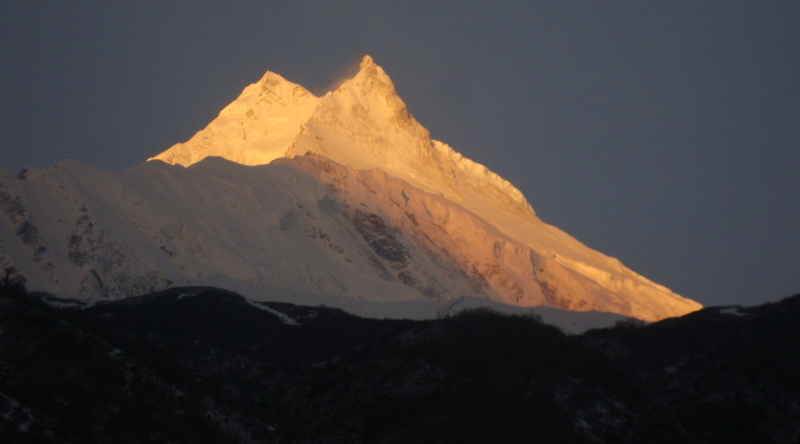
NEPAL, THE MANASLU CIRCUIT, KATHMANDU, AND MT. EVEREST
VILLAGES AND ALTITUDE PROGRESSION
The villages are built high above a rushing river with one footpath connecting them. This path is shared by villagers carrying firewood, food, and general supplies, along with basket-hauling horses and mules, and free-roaming cows and yaks. (click images to enlarge)
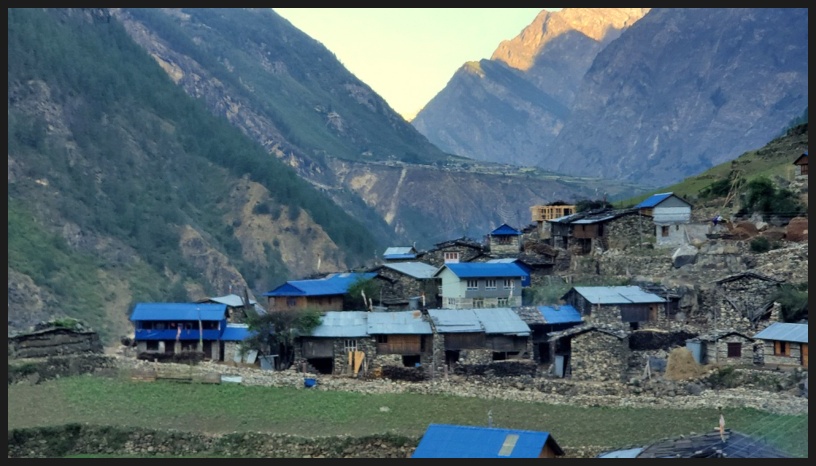
We started in the village of Bihi (foreground), walking the next day to Prok (on the plateau in the background). This hike took about 6 hours, which was typical. Each day, for 13 days, we traveled up valley to a new village, acclimating ourselves to higher and higher elevations.
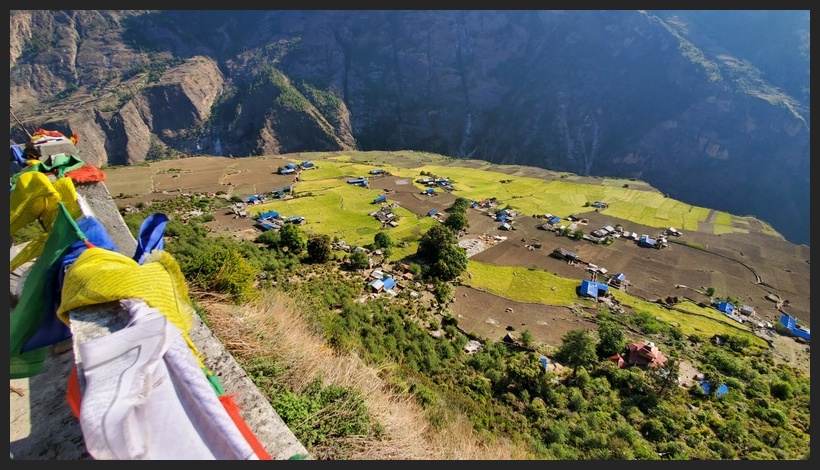
Looking down at the village of Prok, sitting high on a canyon wall plateau.
Another village across the canyon is visible in the upper left.

Tenzing’s Nepali brother is a monk at the Serang Monastery, near Bihi. They have a school for local children and are always in need of English-language books.
We brought a collection for the school and our daughter wrote this note in Tibetan to her cousin’s brother to be delivered with the books. We had hoped to deliver them ourselves but the trail to the Monastery was damaged.
THE DAILY TREK
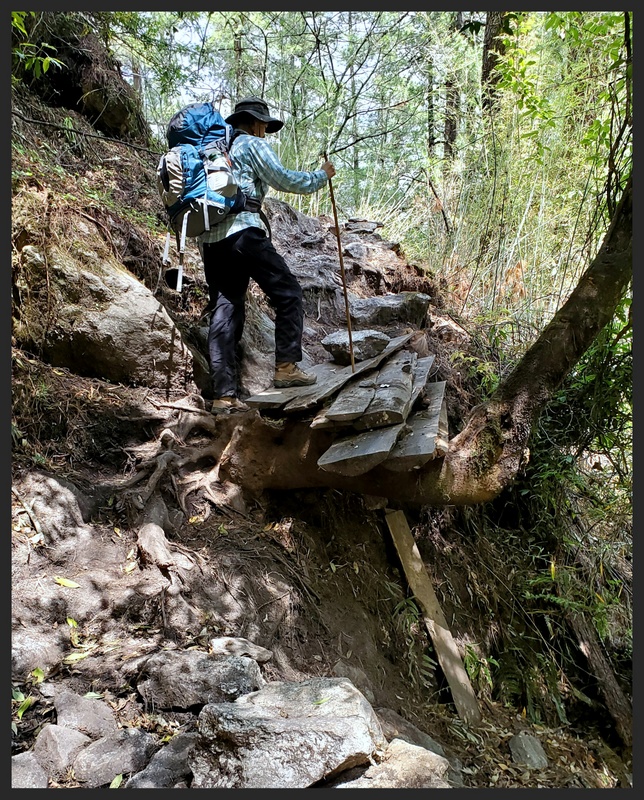
Each day was a 4-8 hour hike, progressing from village to village, gaining about 1,000 feet of altitude, which helps trekkers acclimate for the most difficult day – hiking a 17,000 foot high pass near Mt. Manaslu.
Sometimes we weren’t sure where the trail was. Rain showers constantly washed it out, or landslides covered it completely – forcing trekkers to pick their way over loose dirt slipping off a canyon wall.
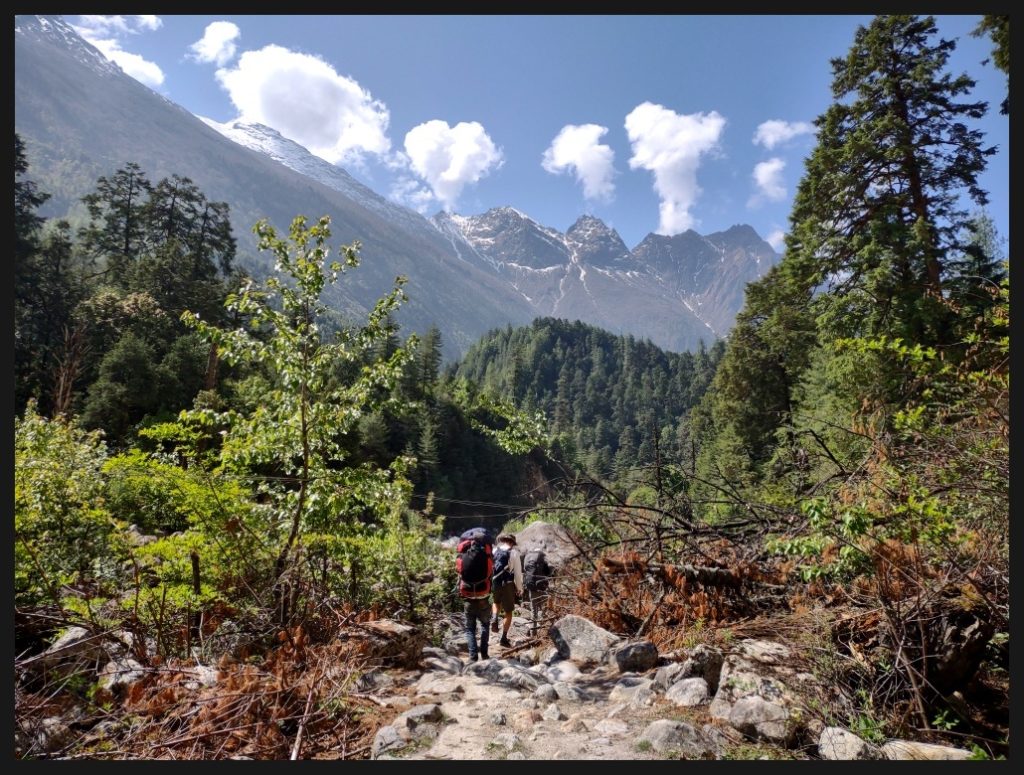
Himalayan peaks making their own weather – here they’re pretending to be volcanoes. 
Traffic jam. 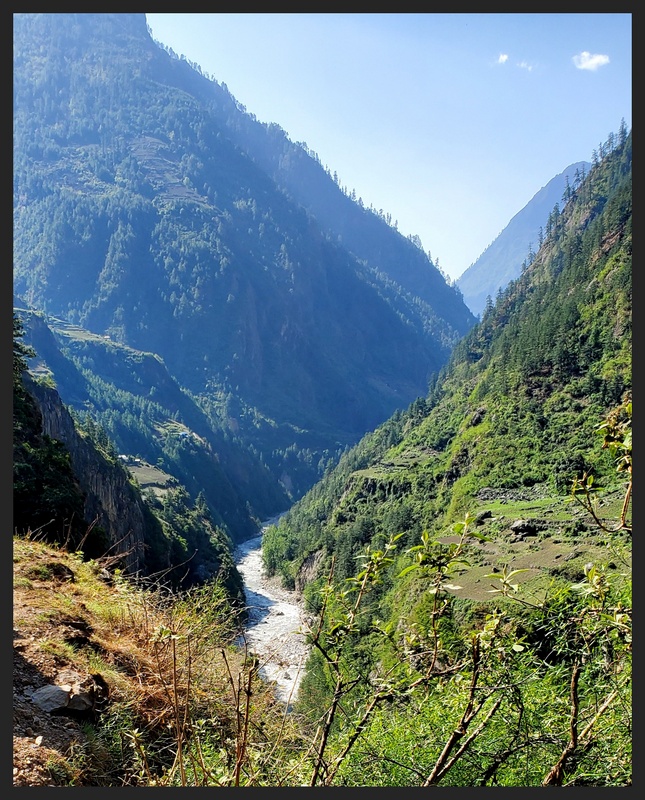
The river in Nubri Valley 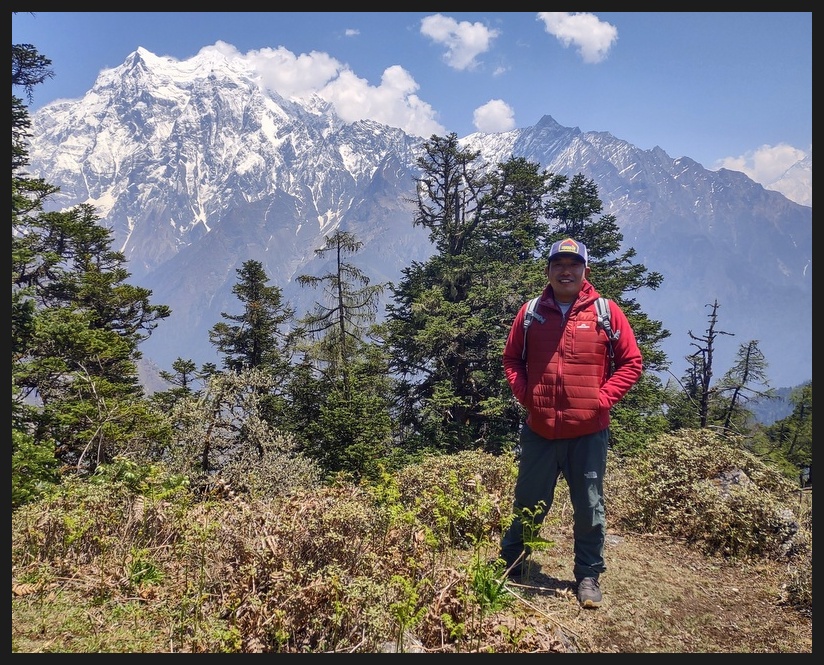
Lhakpa Lama – BEST. GUIDE. EVER! 
Minimalist trail hugging a high steep slope 
Our guide brought a pony that came with a driver named Neema. 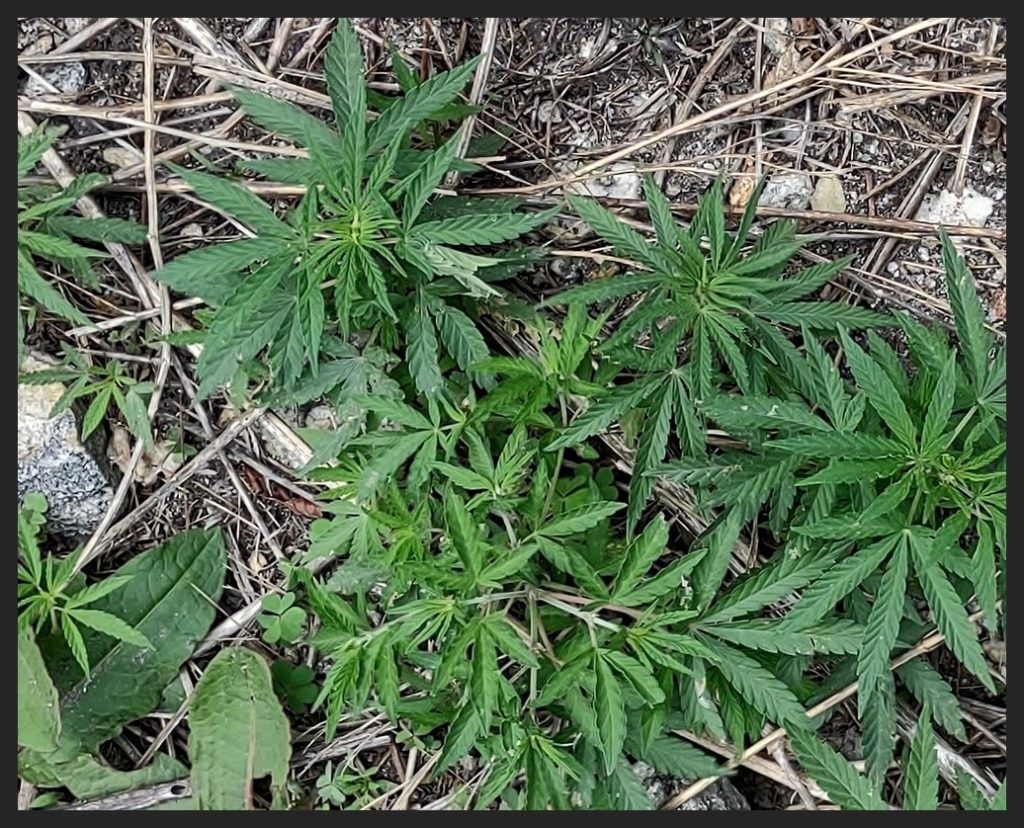
This ‘weed’ showed up at certain elevations, growing along the side of the trail. 
Side hike to a 12,000 ft high lake caused two of our girls to get altitude sickness. They were fine the rest of the trip. 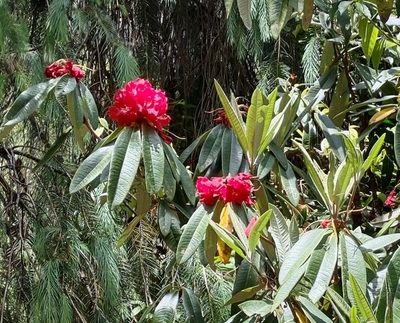
Rhododendrons! 
Suspension bridges keep trekkers going and villagers connected with each other 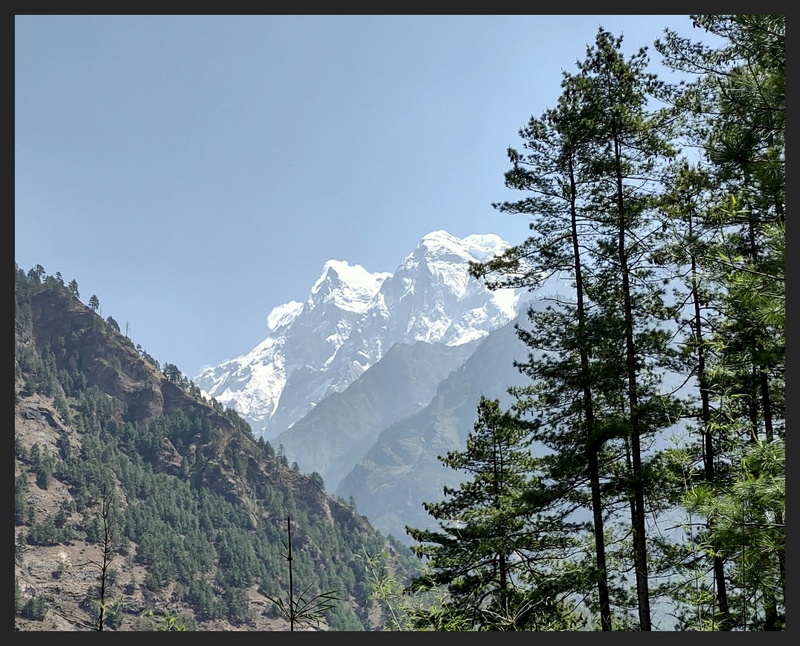
First glimpse of 20,00+ ft. high peaks 
Day #8 – getting colder, higher, and the hikes are longer 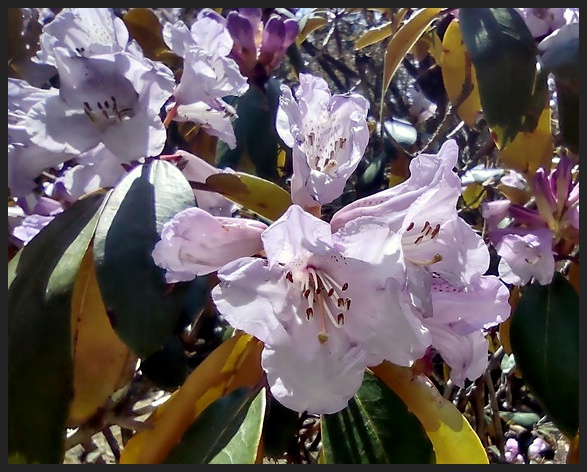
More rhododendrons 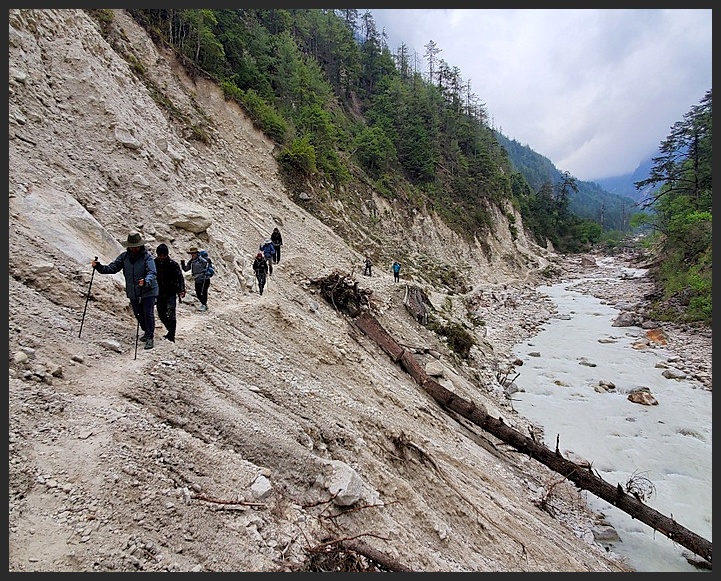
Navigating a landslide 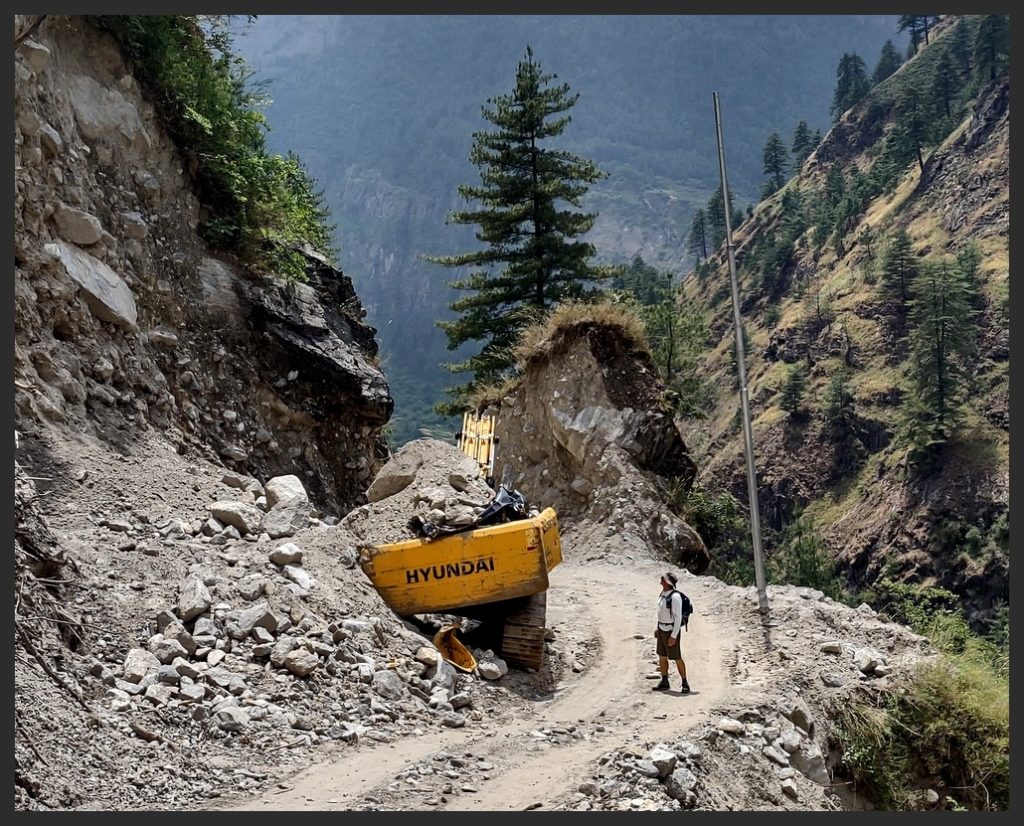
First motorized vehicle shows up at the very end. It was sad to see it had been destroyed by a landslide – a high dollar loss for the villages.
HIGHER ALTITUDES AND THE PASS

Leaving the Dharmsala shelter at 5am 
Higher and… 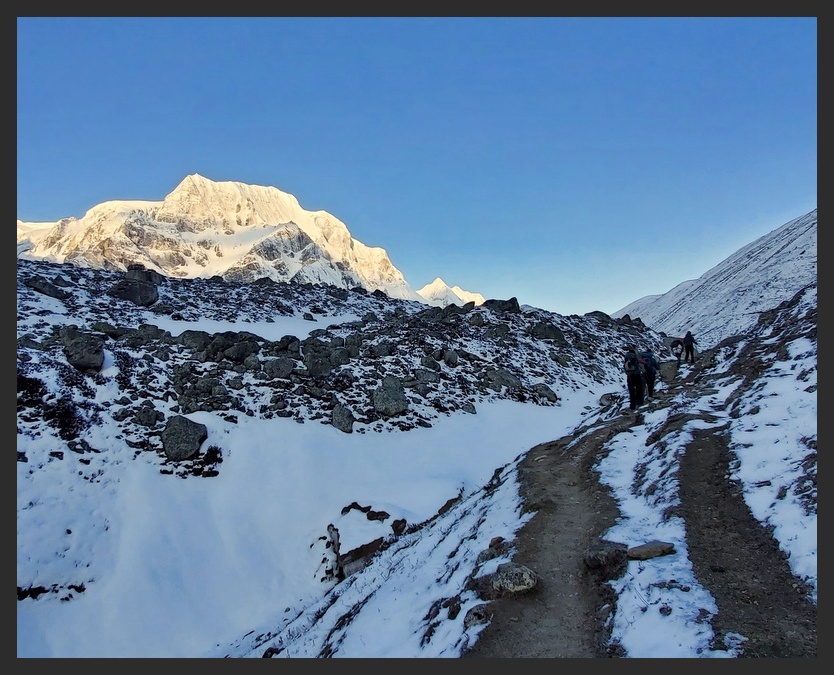
The blue sky came back! 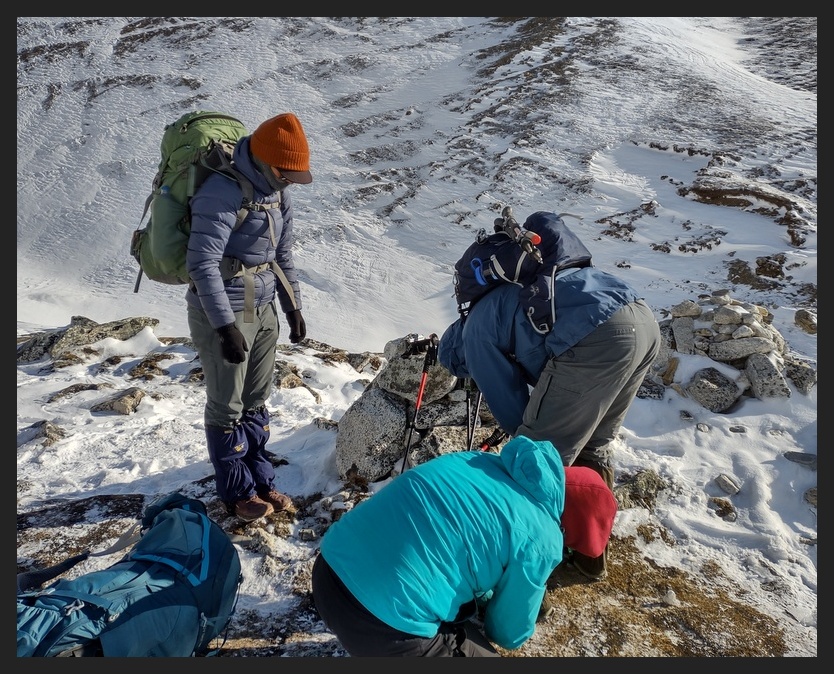
Gearing up with Yaktrax and gaitors 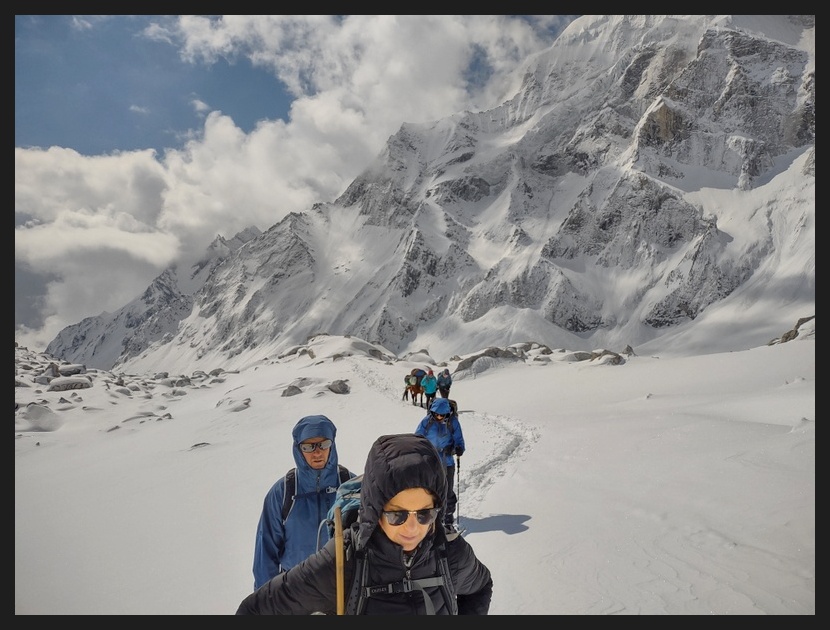
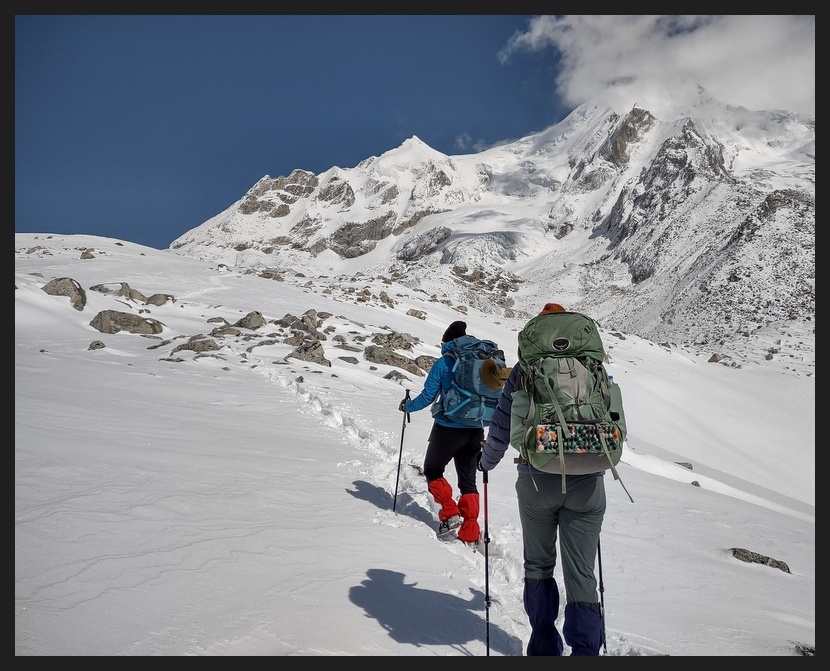
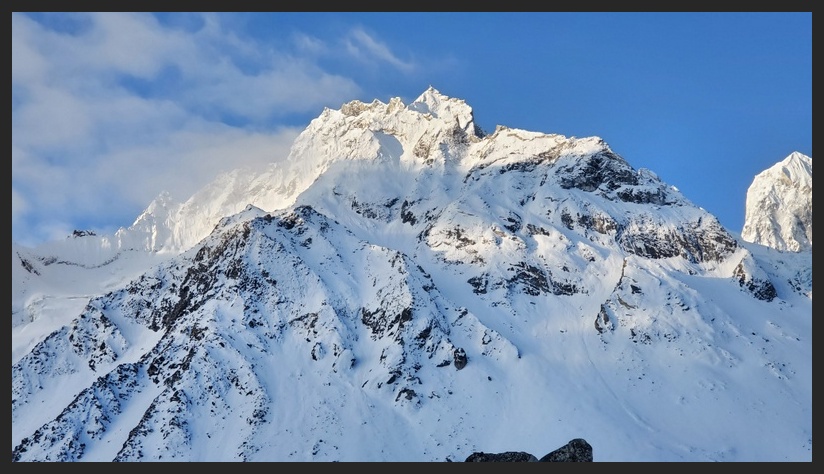
Mt. Manislu from the pass side 
Success at Larkya Pass, 16,929 feet 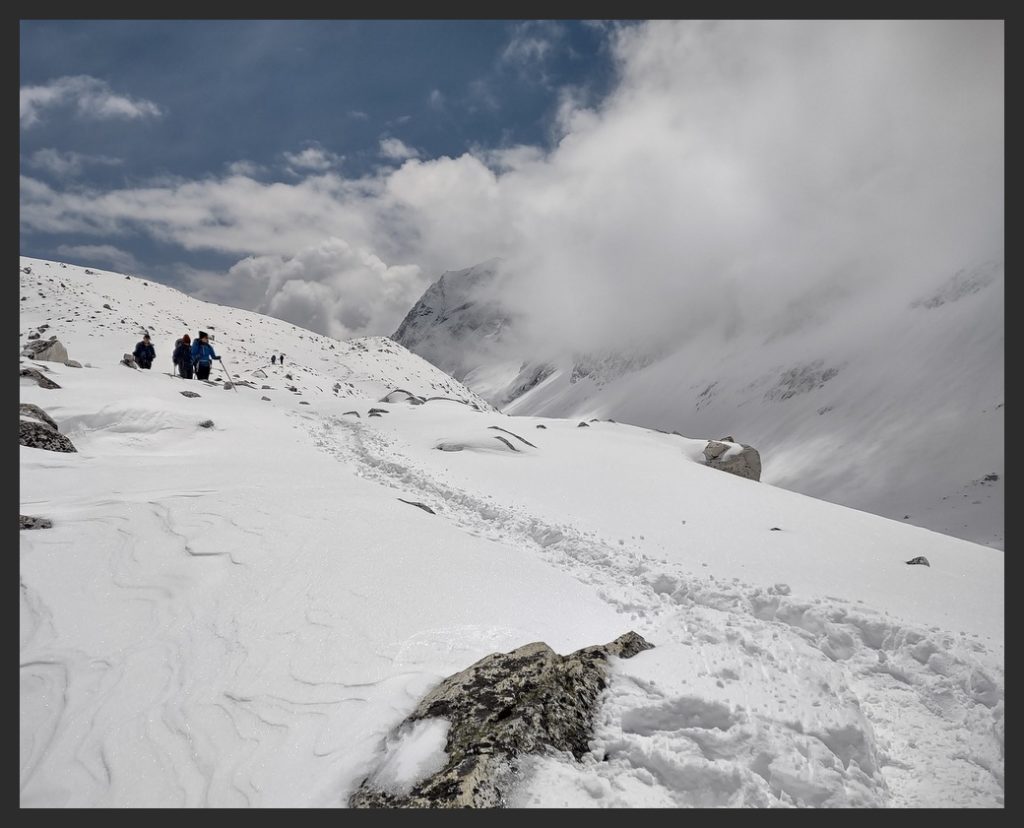
The drop off on the right was well over 100 feet 
Landslide! 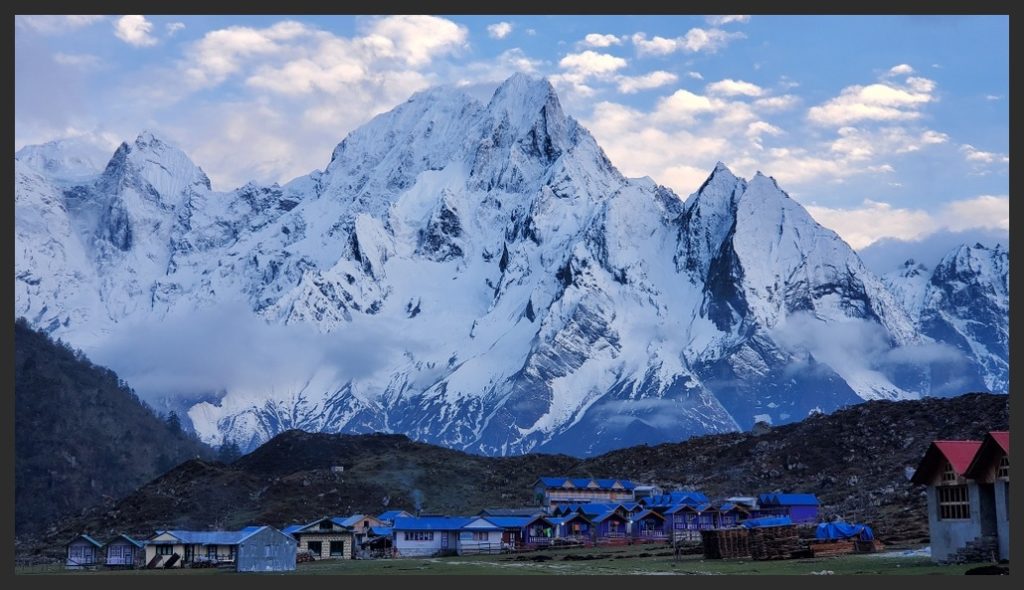
Bhimtang village – a welcome sight after a 13-hour hike over the pass.
TEA HOUSES & FOOD
We spent each night in a tea house, which is usually a family home with added rooms (sometimes mini cabins). The owner prepares and cooks traditional Nepali meals for trekkers in the family kitchen over an open cookfire. Bathroom facilities are an outhouse-type building with a squat toilet and a water bucket for manual ‘flushing’. Electricity was available about half the time, and our wi-fi only worked in two places.
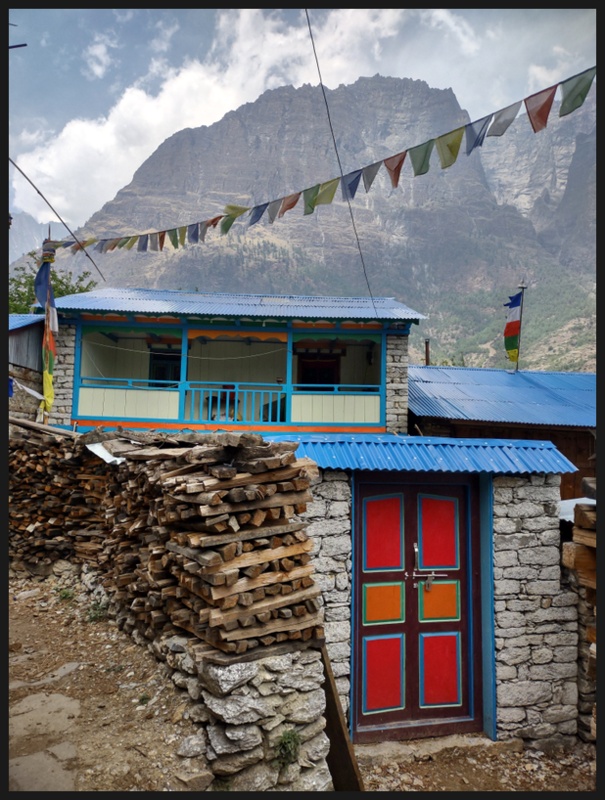
Prok 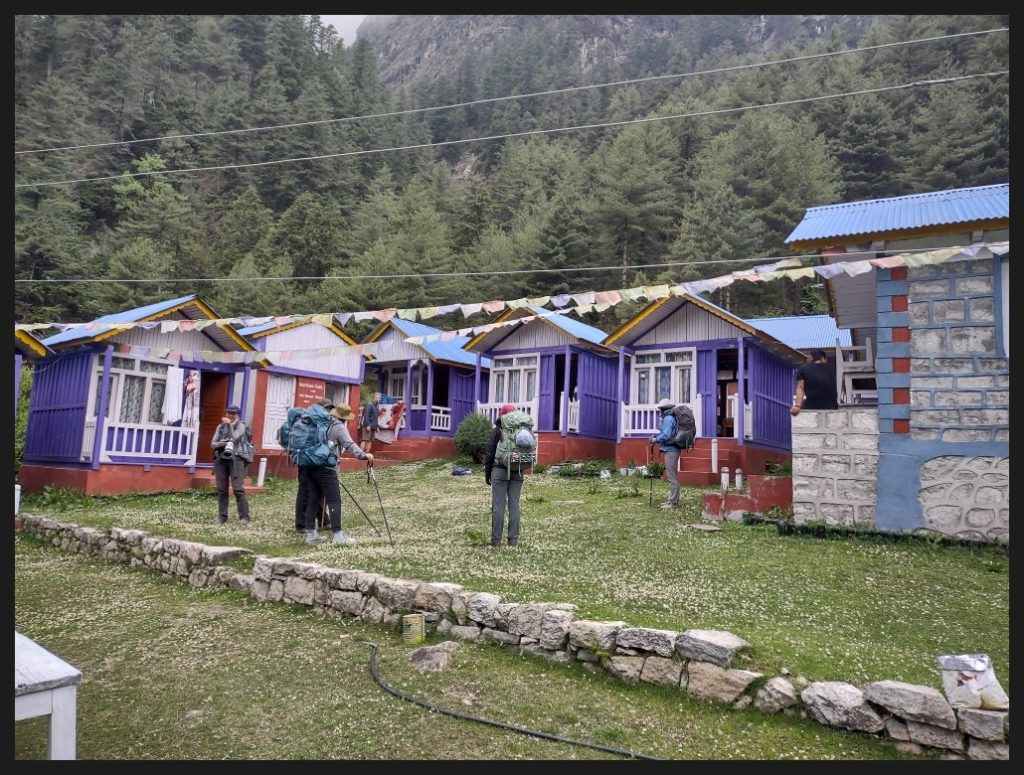
Surki Kola 
Bihi 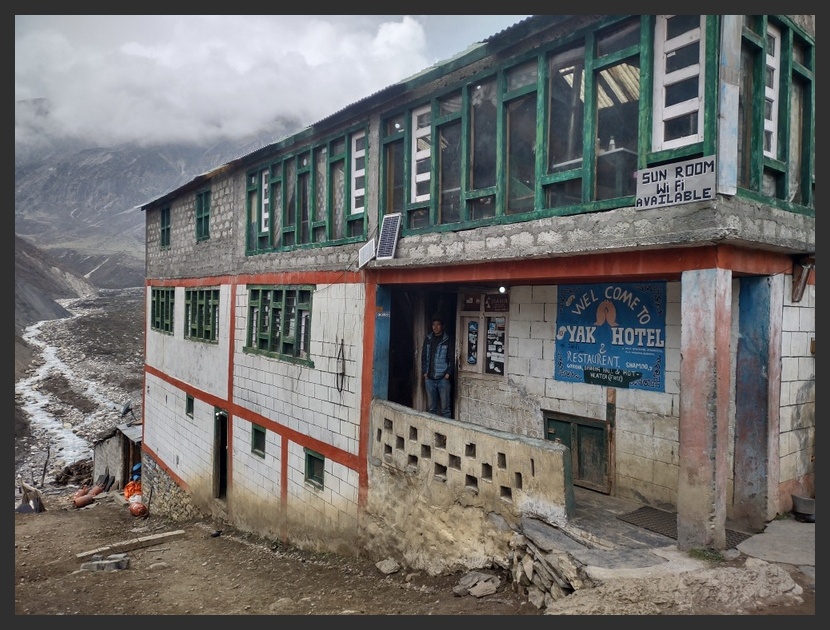
Samdo, 12,700 feet elev 
Dharapani 
Typical room or cabin. The light switch rarely worked. Headlamps were essential. 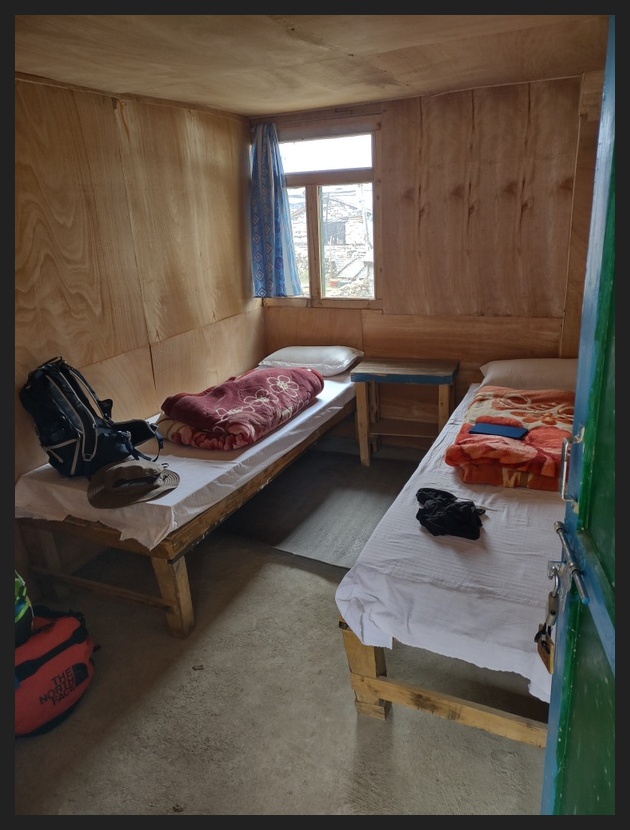
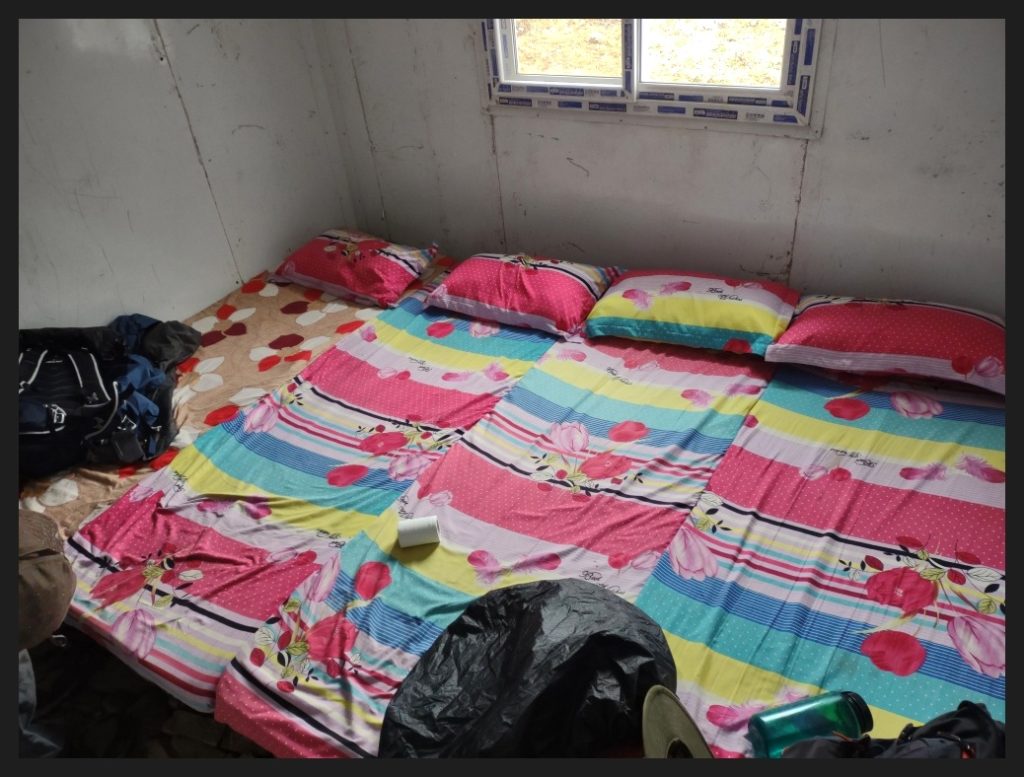
Shelter at Dharamsala, 14,700 ft elev. These pads were sitting on gravel. There was a snowstorm the afternoon we arrived, but that cleared up for the next day’s hike over the pass. 
Veggie curry soup 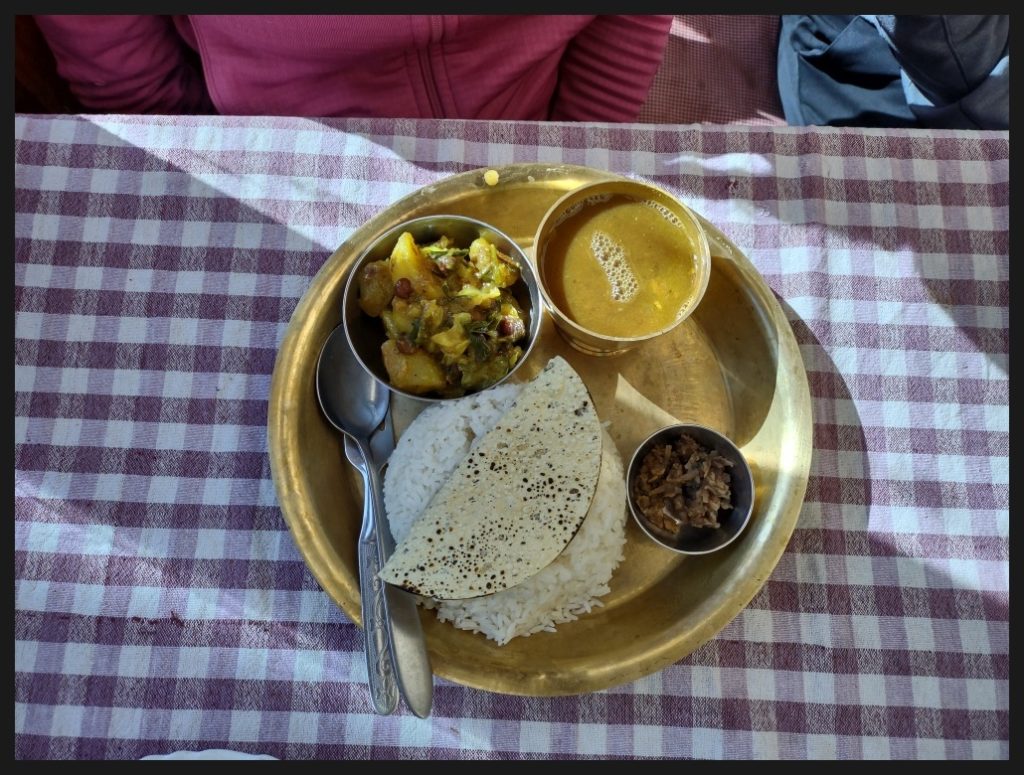
Dal bhat, a traditional Nepali meal 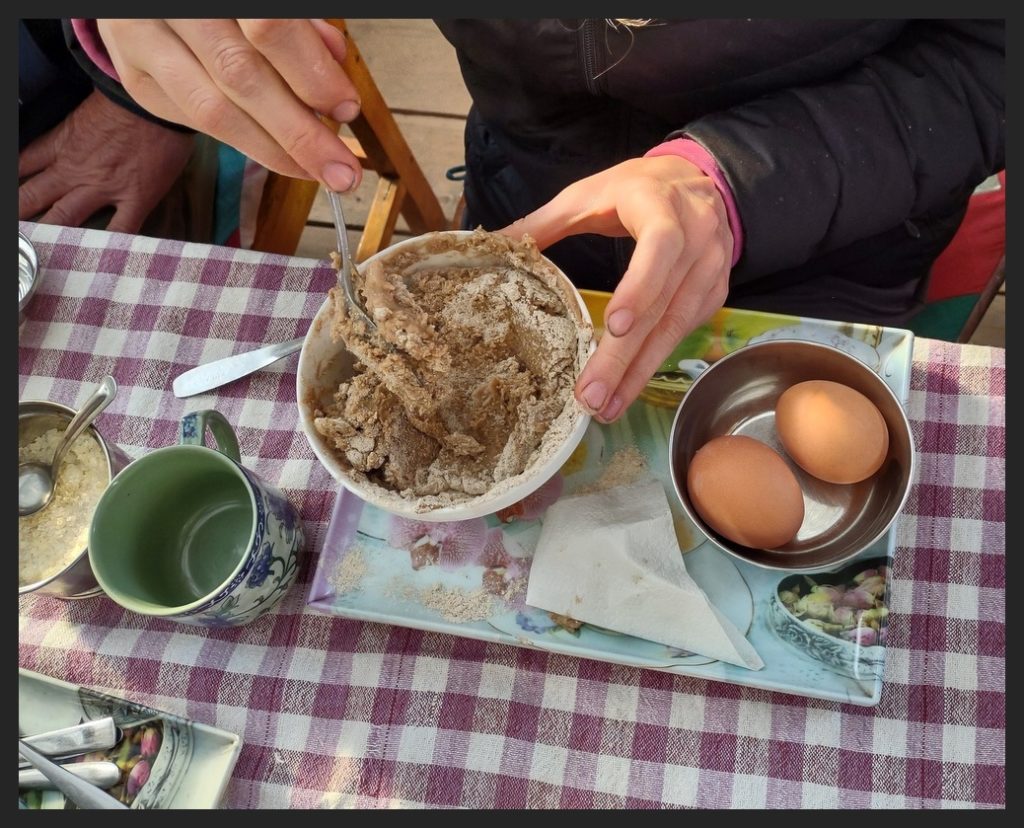
Tsampa, a Himalayan staple, made from roasted flour 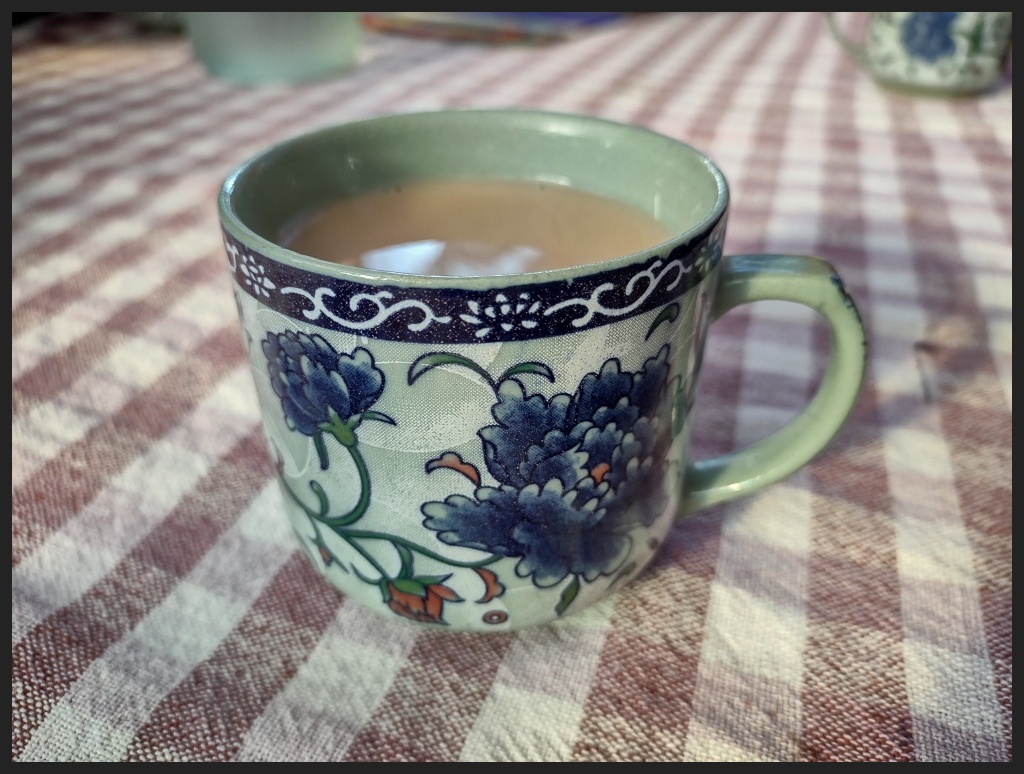
Milk tea – morning, noon, and night! 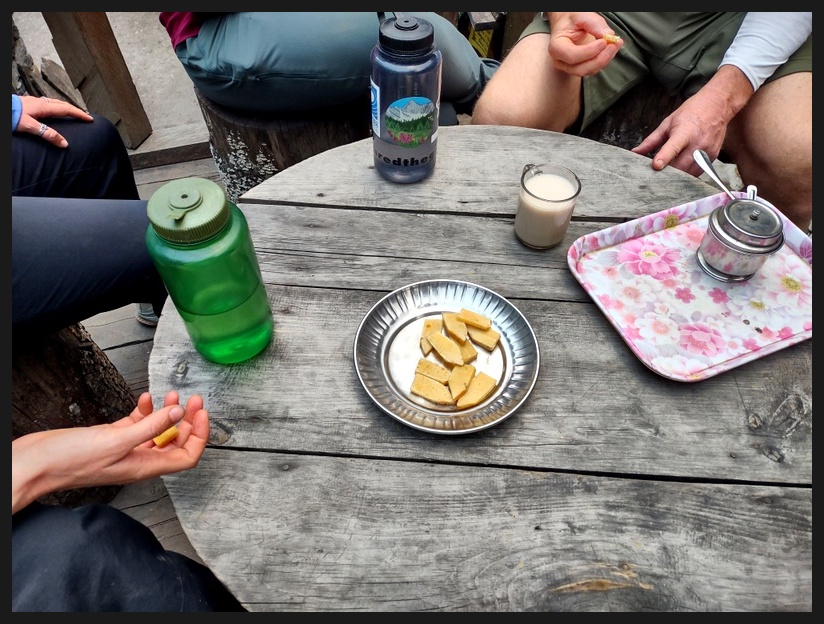
Break: milk tea and yak cheese 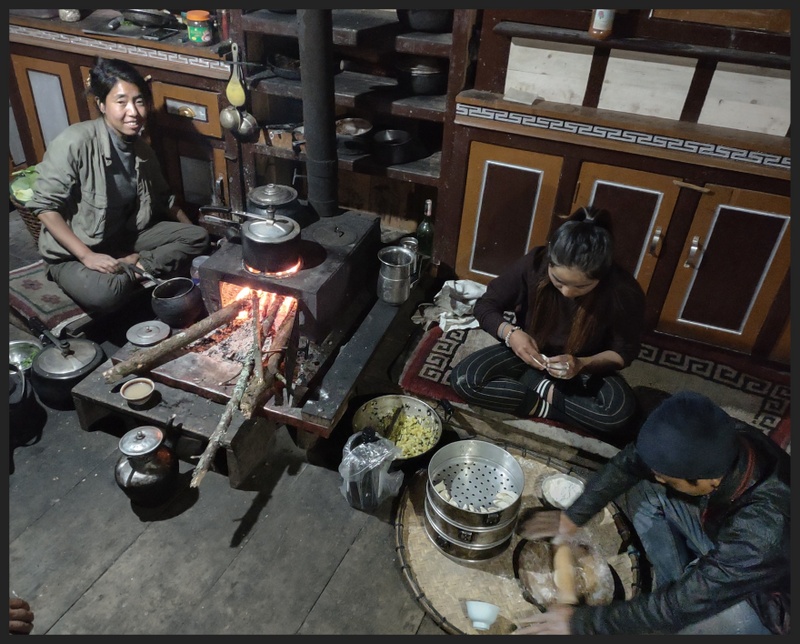
Open cookfire on the kitchen floor keeps family members warm. The two people on the right are making momos for us, delicious steamed dumplings.
VILLAGE LIFE
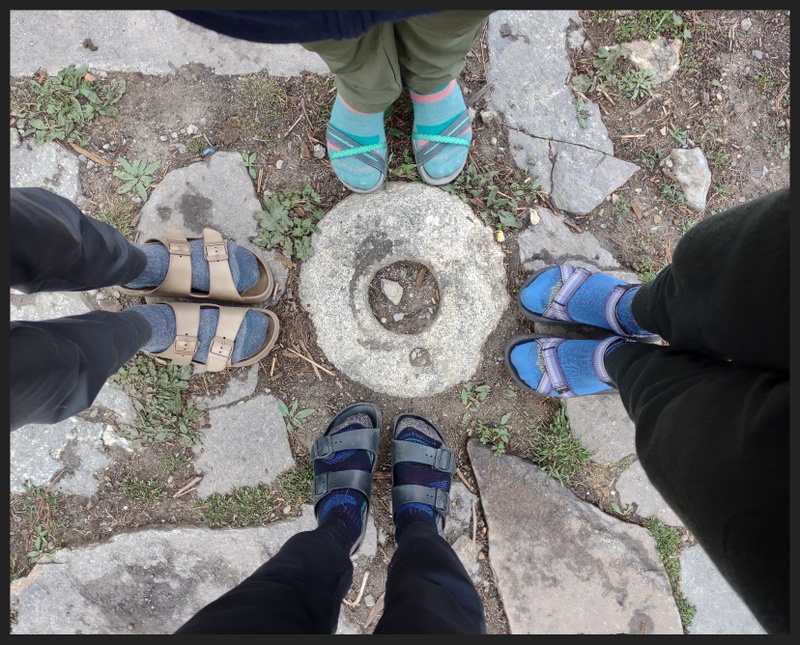
Each village had a spirit stone, a round doughnut-shaped stone.
Generations ago, locals placed the stones over vents used by evil spirits to escape middle earth, protecting the village from evil misdeeds.
The Thunder Family felt no ill vibes during this shot!

Lhakpa walked up to this yak to say hello and our daughter jumped right in 
Elderly villager carrying a load of firewood was miles away from home. 
Himalayan Tahr (goat-like musk deer with a lion’s mane) 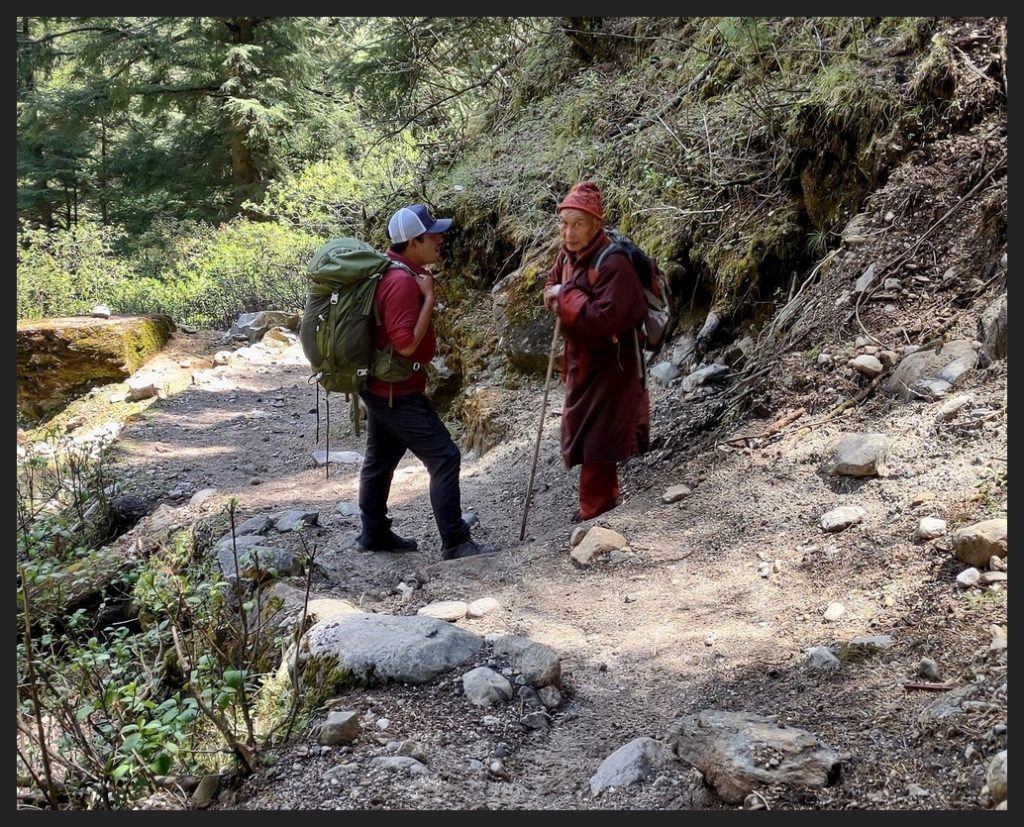
Lhakpa, constantly ran into friends and family members. 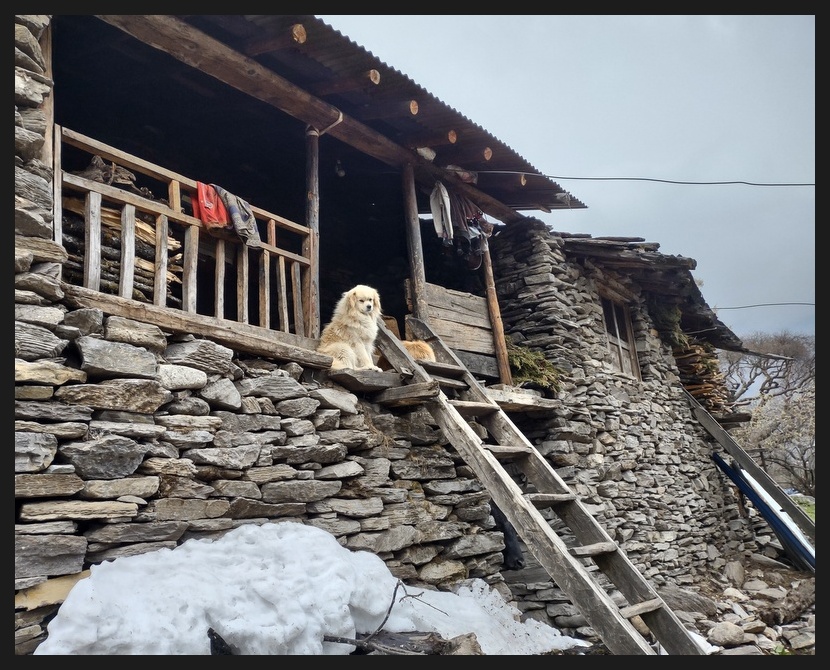
Dog protecting the family home. 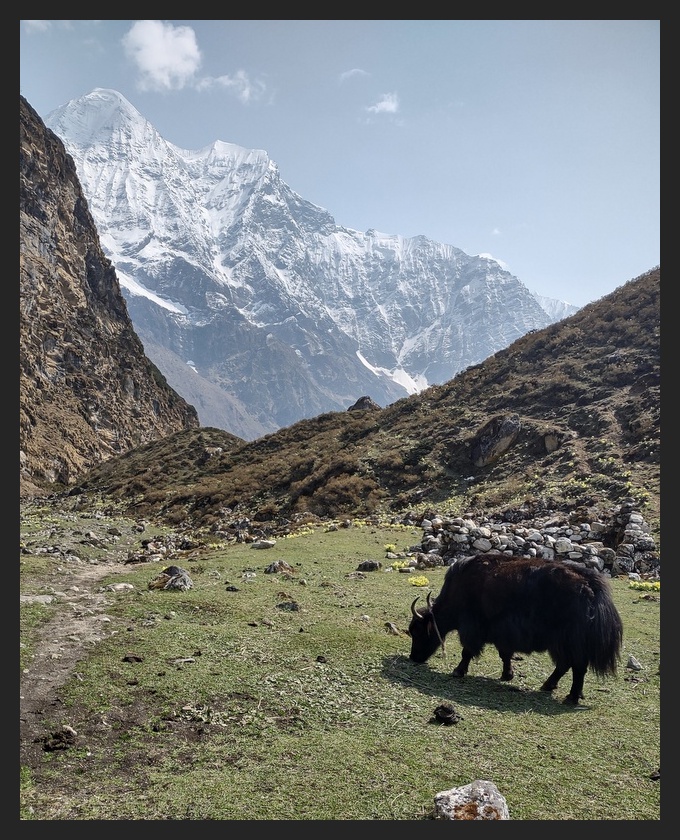
Yaks like the higher altitudes 
School house at 11,500 feet elevation 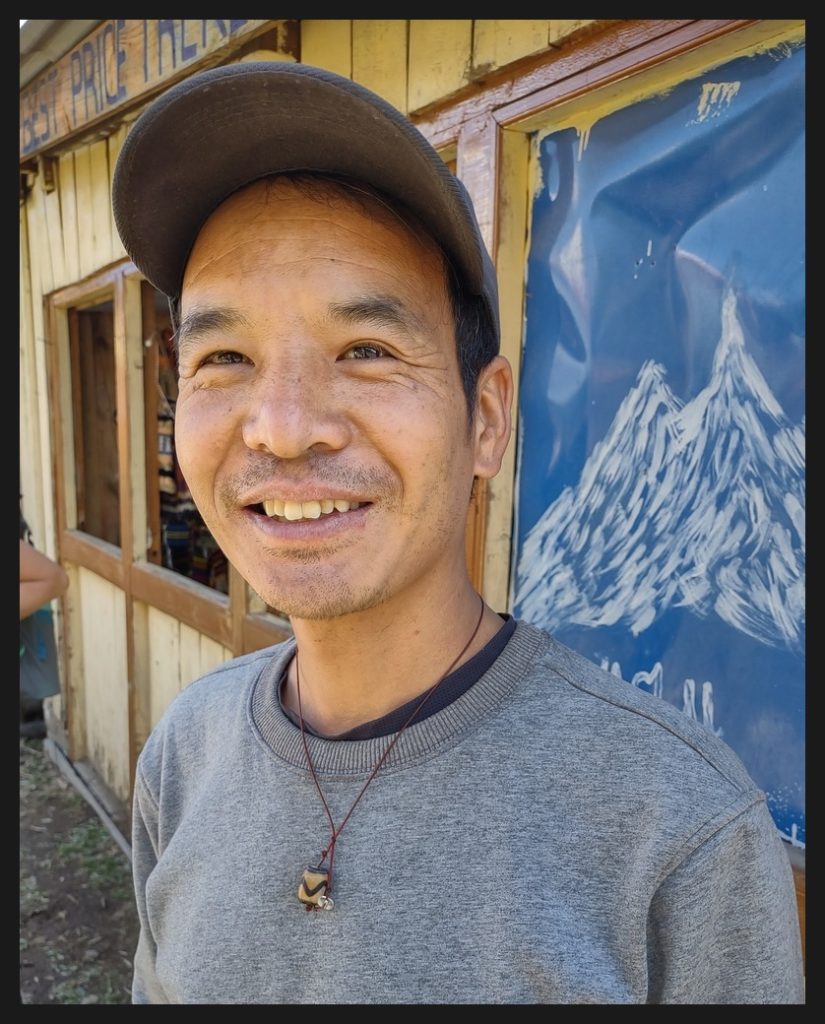
Tea House owner proudly showing his Dzi bead necklace. 
Yaks come in all colors 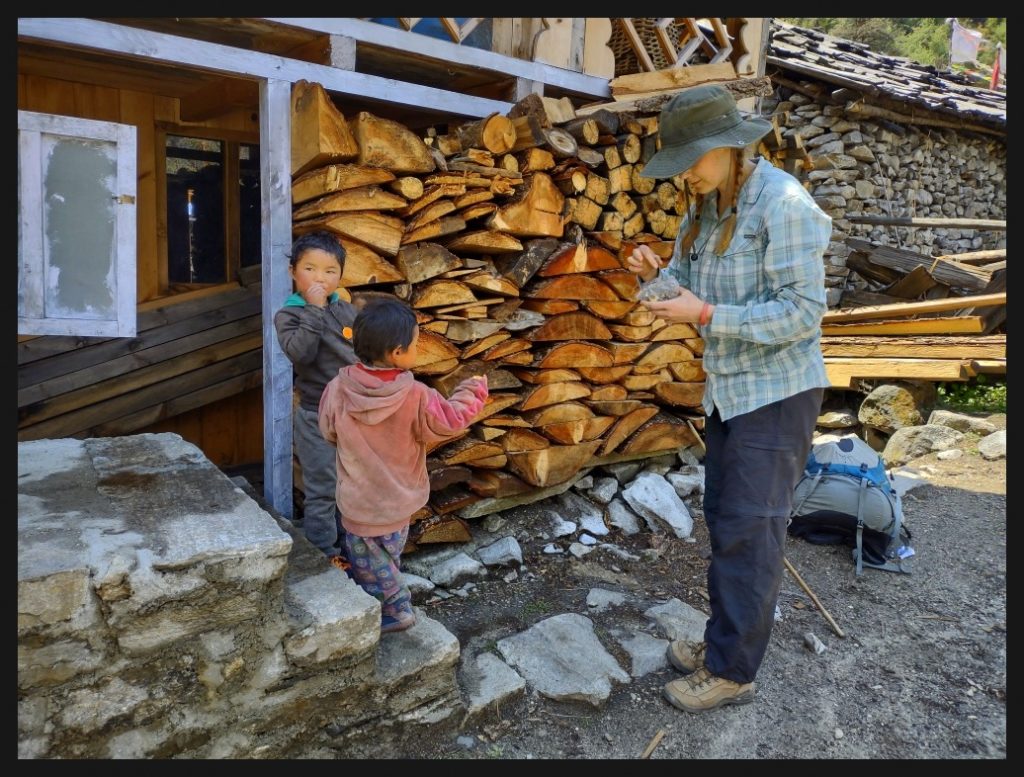
Sharing jelly beans with some happy kids. 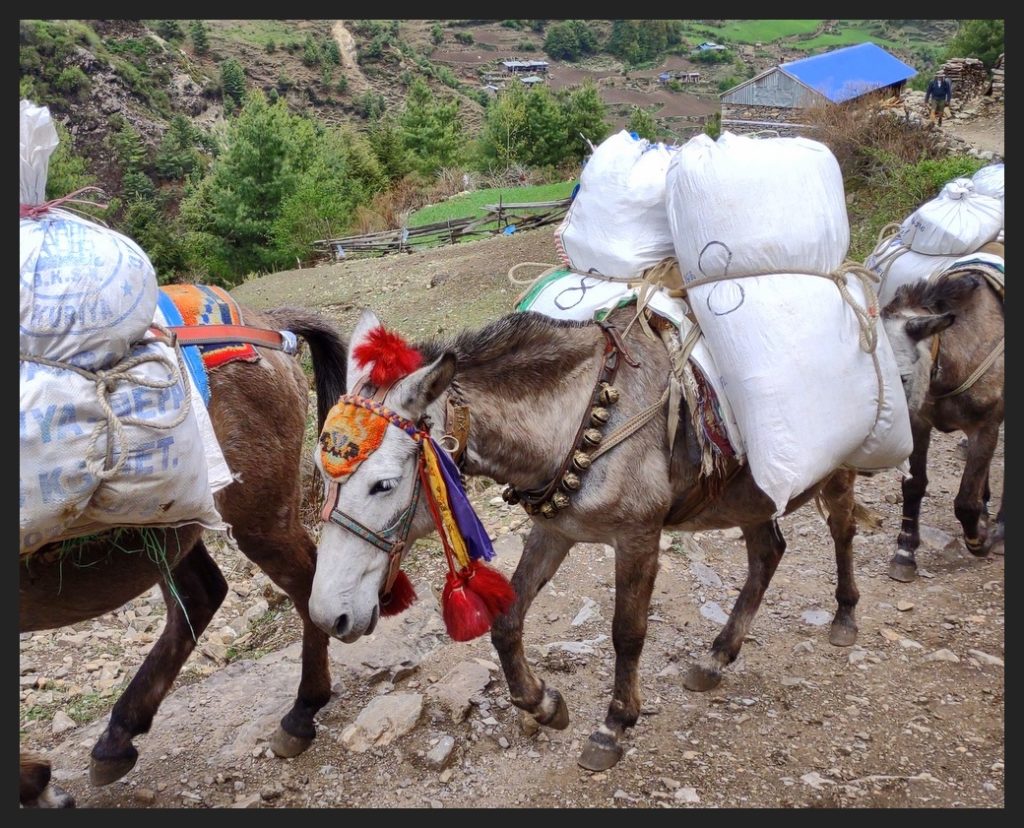
The animal trains carrying supplies were never tied to each other – they all knew exactly where to go. 
Resing on the trail 
Kids playing on the roof of a building sitting on the edge of the canyon. The drop was 100+ feet. 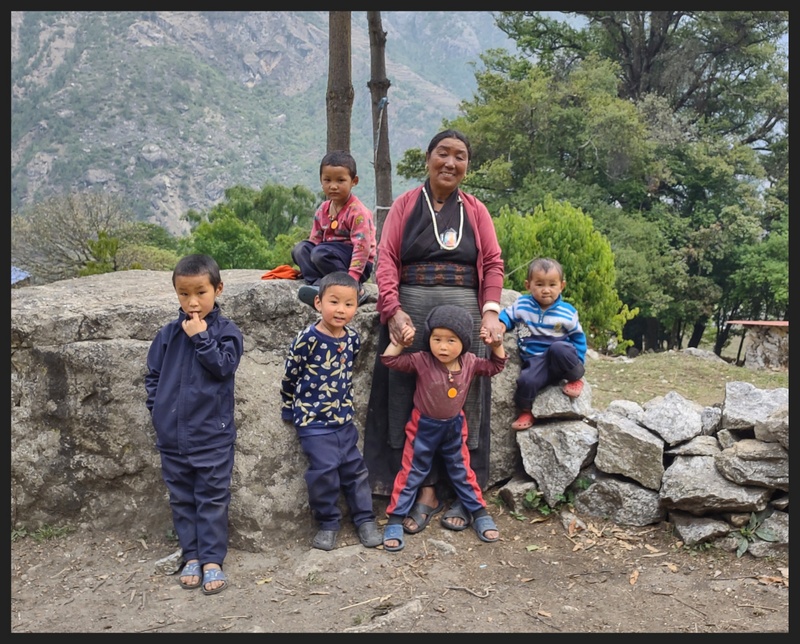
We were lucky enough to meet Tenzing’s auntie and cousins.
BUDDHIST SHRINES
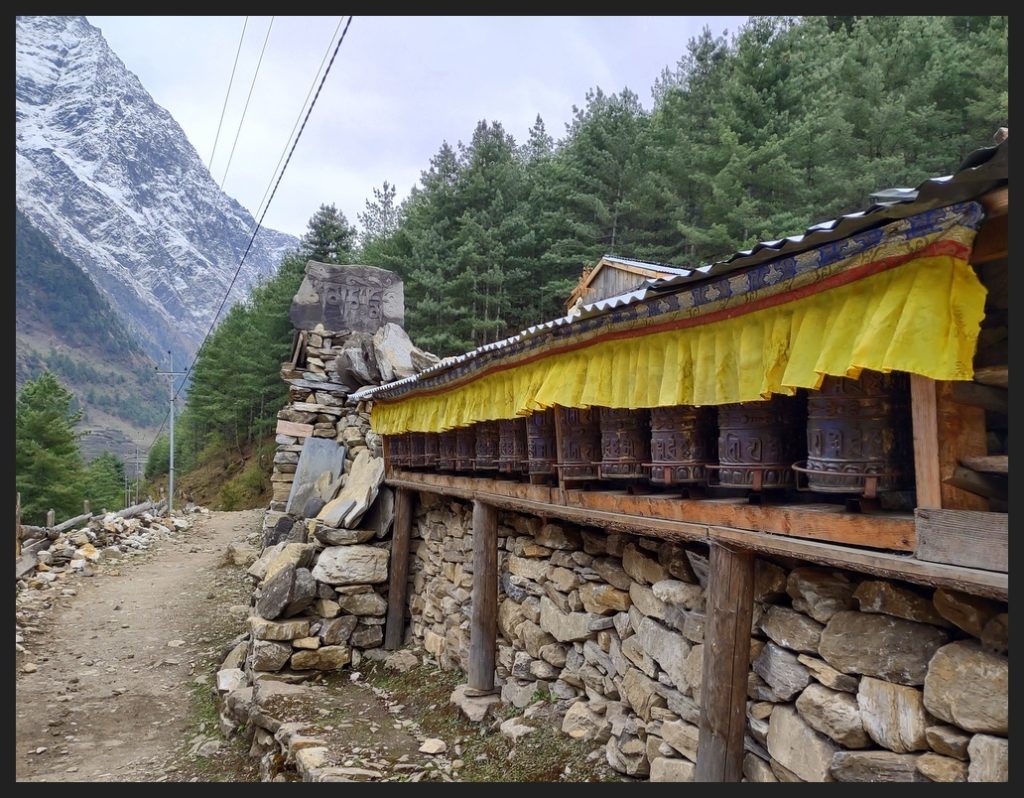
Buddhist prayer wheels 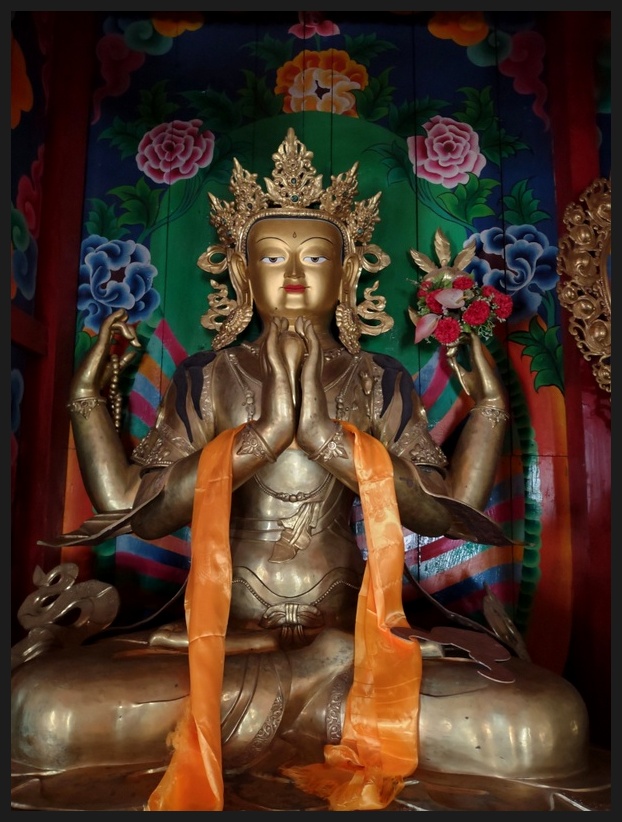
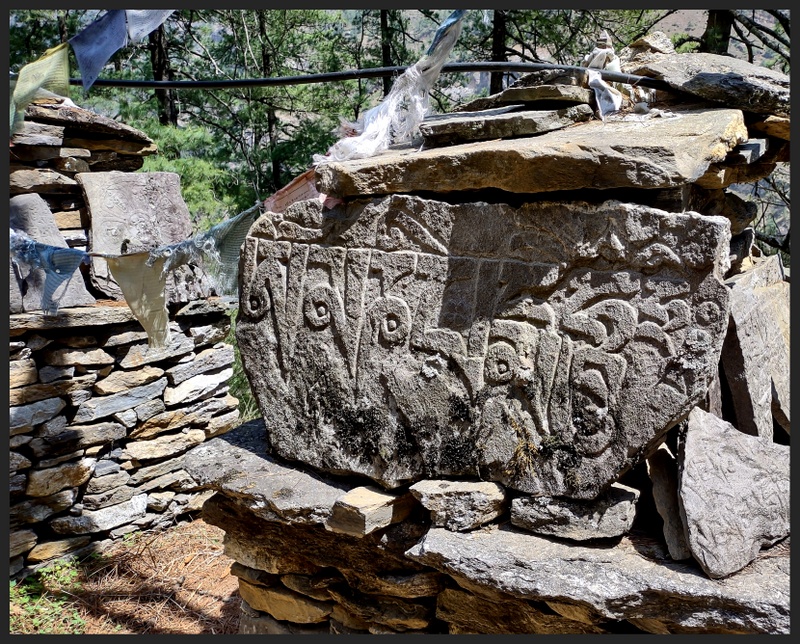
Mani walls are long Tibetan Buddhist stone monuments with hand carvings found throughout the Nubri Valley. 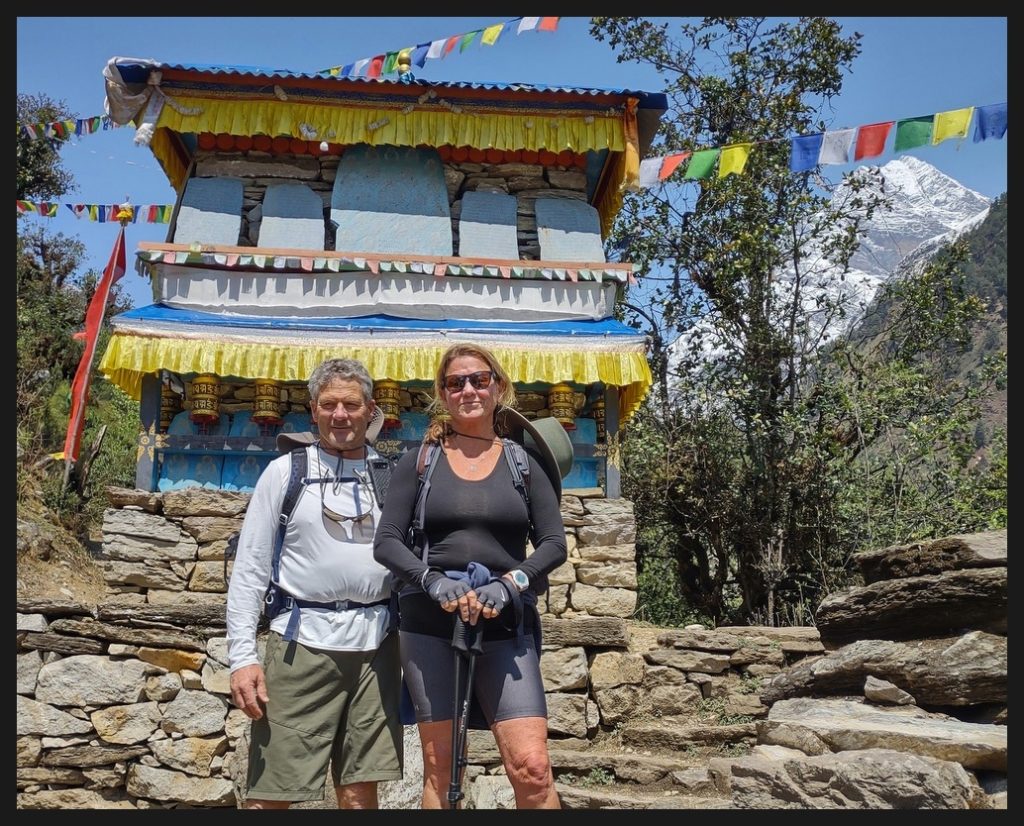
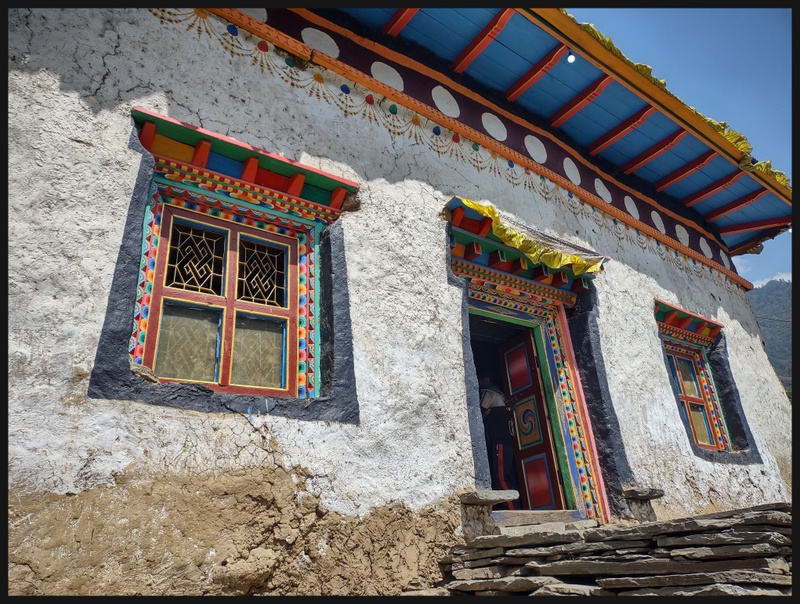
This gompa (Buddhist shrine) sits high above the village of Bihi 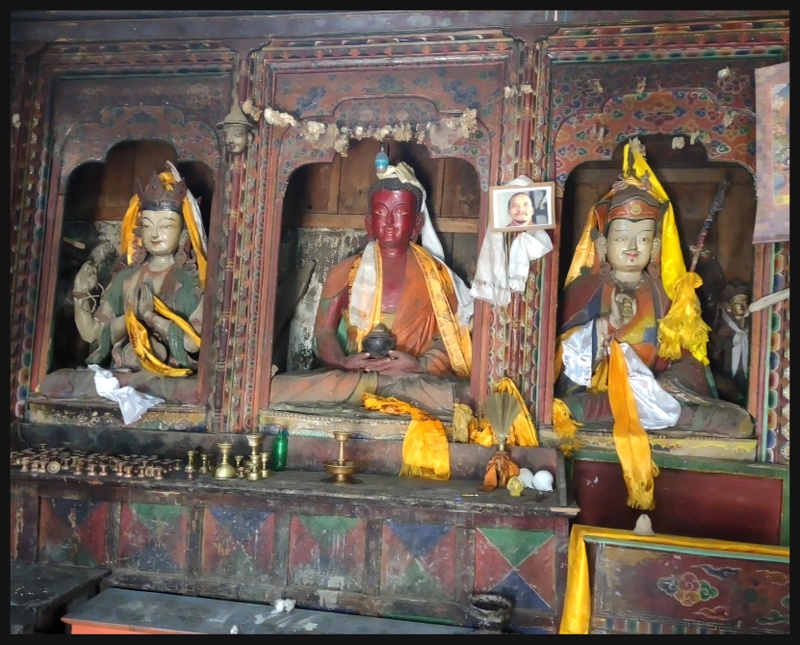
Inside the Bihi gompa 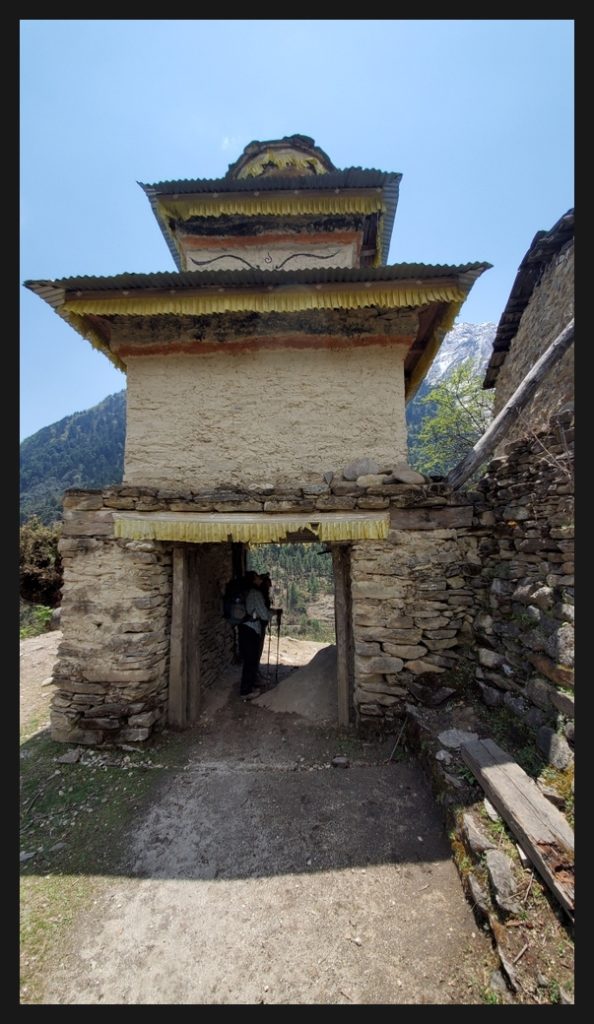
Elaborate shrines pop up in villages as well as on the trail. 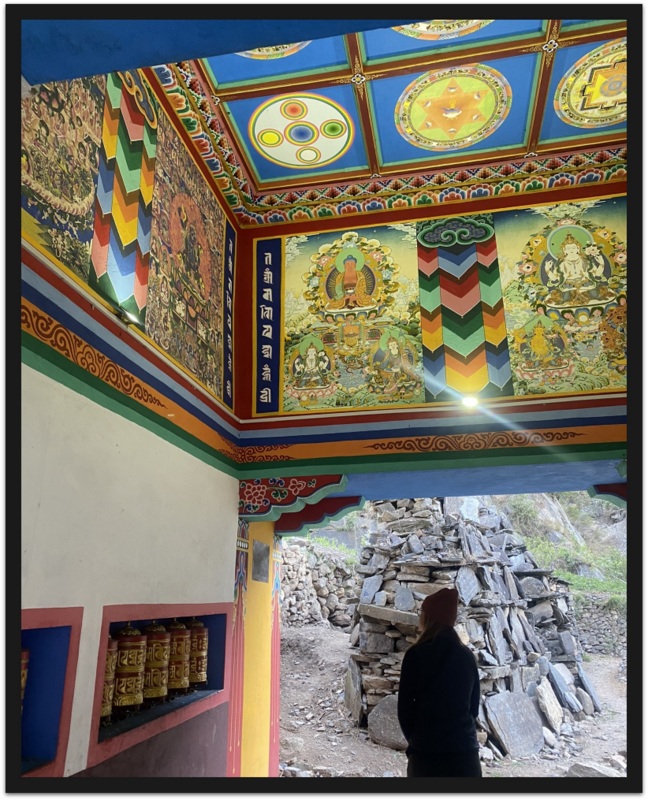
Inside one of the trail shrines – always look up! 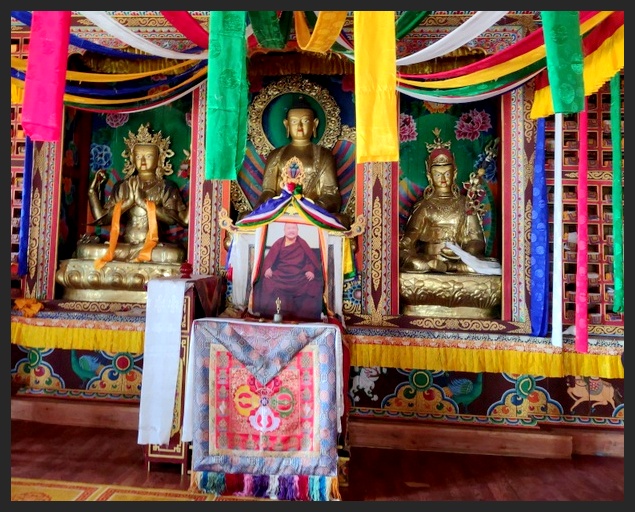
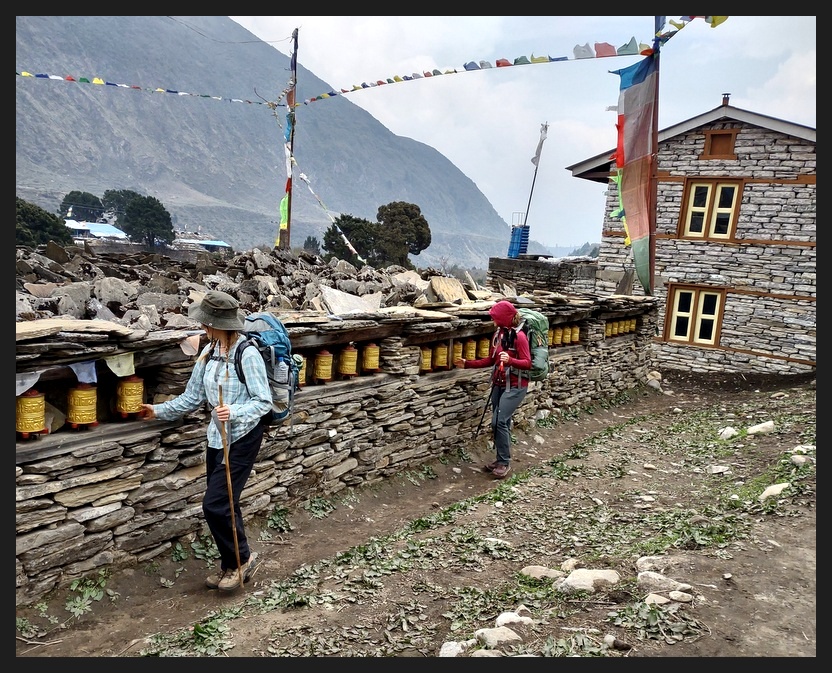
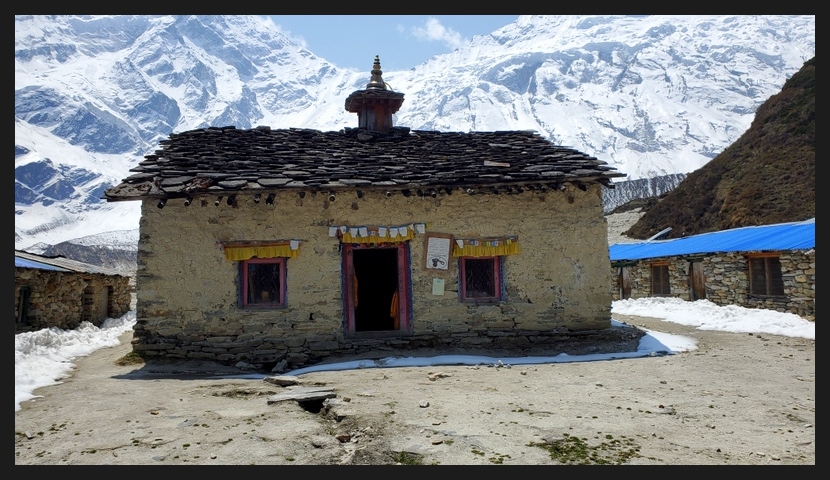
Pungyen Gompa, 13,000 feet elev. 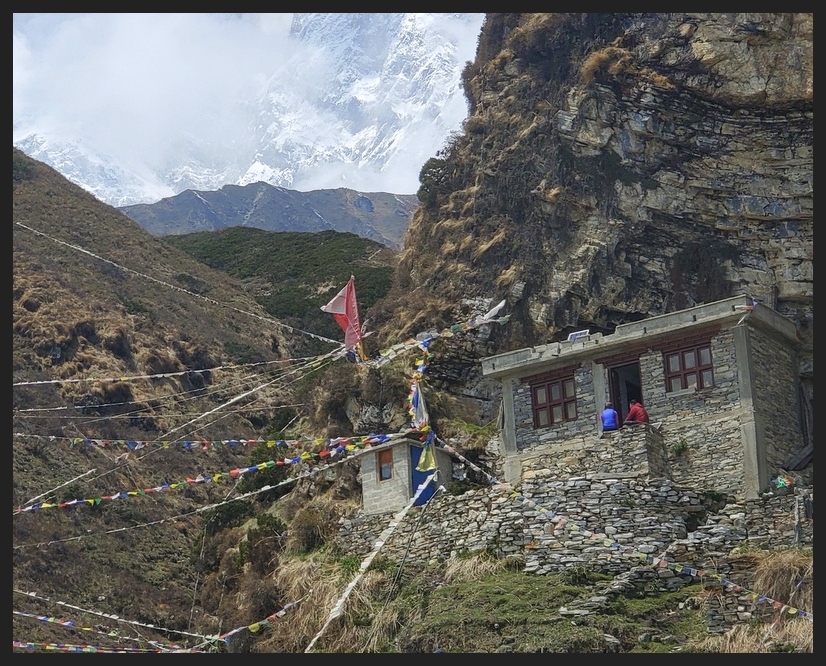
Our daughter and Lhakpa delivering a gift tot he Pungyen lama from our sister-in-law.

